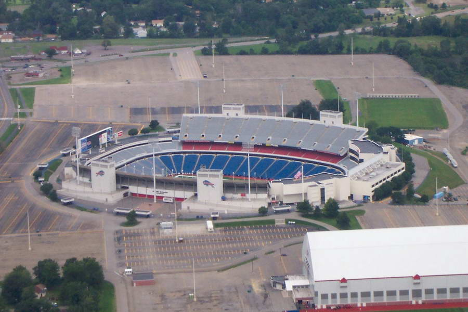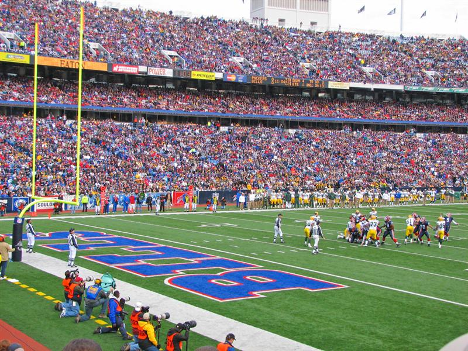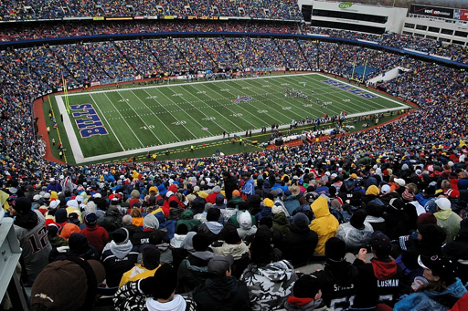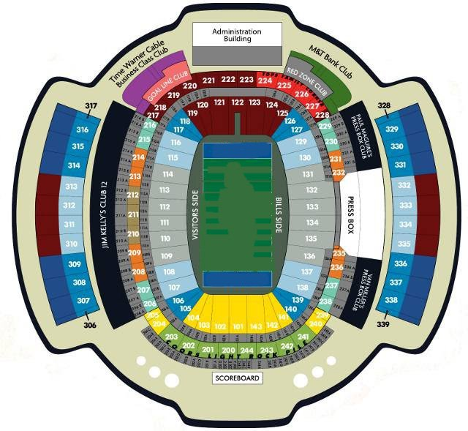
When Buffalo Bills joined the NFL in 1970, it became evident that the team needed a bigger venue than War Memorial Stadium they played at from 1960 to 1972. NFL officials required a minimum of 50,000 seats and the club's existing facility only housed 47,000.
Ralph Wilson, the Bills's owner at the time, reached an agreement to erect a new stadium in Orchard Park, a town south of Buffalo. Construction began on April 4, 1972 and was completed in record time, as the official opening took place on August 17, 1973.
Initially, the facility could accommodate just over 80,000 spectators on three levels of the stands. The largest one was the bottom ring that stretched uninterruptedly around the artificial pitch. The second tier was similar, but it was much smaller than the bottom bowl of the stadium. The third level of the auditorium consisted of two rectangular superstructures along the playing field.
Structural composition of the arena, which is still unroofed, has not changed much since it opened. The pitch is 15 metres below the ground level and the last tier of the stands towers 18 metres above the ground.
In the mid-1990s, the venue could still admit 80,000 fans. From that moment on, a gradual reduction in capacity began. In 1998, the auditorium dropped to 74,000 as a result of the installation of new, larger seats. Over the following years, the capacity has decreased to just over 71,000.
The stadium has undergone a series of modernization works aimed at expanding the number of premium seats. The vast majority of them are located between the first and second, as well as the second and third tiers of the stands. In 1984, 16 executive suites were created and in 1992 a further 24 were added.
In 1994, an additional 500 premium seats and a massive scoreboard were installed. The latter was replaced after 13 years with an even more modern one. In 2007, electronic ribbon-shaped boards were created in the interior. The last revamp took place in 2013, when the infrastructure around the arena (new entrance gates) and the sponsors' exposure (new electronic boards) were enhanced.
Among important events that took place at Bills Stadium, the 2008 NHL Winter Classic, should be mentioned. It was the game between Buffalo Sabers and Pittsburgh Penguins with over 71,000 supporters attending the stadium (NHL record at the time). In addition, the opening ceremony of the 1993 Summer Universiade was held at the arena.


